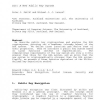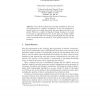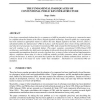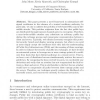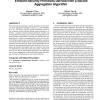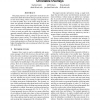119
click to vote
SEC
1993
15 years 2 months ago
1993
We describe public key cryptosystems and analyse the RSA cryptosystem, pointing out a weakness (already known) of the RSA system. We define Lucas functions and derive some of thei...
114
Voted
ICISC
2000
15 years 2 months ago
2000
Abstract. Electronic payment systems for wireless devices need to take into account the limited computational and storage ability of such devices. Micropayment schemes seem well su...
101
Voted
ICISC
1998
15 years 2 months ago
1998
Abstract. Protocols for authentication and key establishment have special requirements in a wireless environment. In the next generation of wireless systems it is likely that publi...
108
click to vote
SEC
2004
15 years 2 months ago
2004
: Smart card secure channel protocols based on public key cryptography are not widely utilised mainly due to processing overheads introduced in the underlying smart card microproce...
87
Voted
ECIS
2001
15 years 2 months ago
2001
It has been conventional wisdom that, for e-commerce to fulfil its potential, each party to a transaction must be confident about the identity of the others. Digital signature tec...
106
Voted
DIMVA
2008
15 years 2 months ago
2008
Abstract. This paper presents a novel framework to substantiate selfsigned certificates in the absence of a trusted certificate authority. In particular, we aim to address the prob...
102
Voted
PQCRYPTO
2010
15 years 2 months ago
2010
Abstract. Recently, the Csignature scheme has been completely broken by Dubois et al. [2, 3]. As a consequence, the security of SFLASH and other multivariate public key systems hav...
114
Voted
CCS
2008
ACM
15 years 2 months ago
2008
ACM
By functionally decomposing a specific algorithm (the hierarchical secure aggregation algorithm of Chan et al. [3] and Frikken et al. [7]), we uncover a useful general functionali...
NSDI
2007
15 years 3 months ago
2007
This paper proposes a new approach to anonymous communication called information slicing. Typically, anonymizers use onion routing, where a message is encrypted in layers with the...
106
Voted
EUROCRYPT
2000
Springer
15 years 4 months ago
2000
Springer
Cryptography is more and more concerned with elaborate protocols involving many participants. In some cases, it is crucial to be sure that players behave fairly especially when the...
